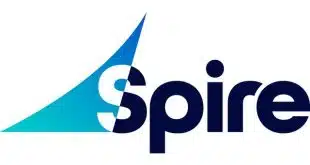Faster payments in the United States took a major step forward in November with the sending of what many consider the first U.S. faster-payment transaction. A payment was made, in seconds, between U.S. Bank and BNY Mellon using The Clearing House’s Real Time Payments system, a system that meets evaluation criteria used by the Federal Reserve’s Faster Payments Task Force.
Faster-payments advocates can get into heated debates over what is truly a faster payment. The debate is about more than bragging rights. At stake could be who will make payments to and receive payments from faster-payments systems around the world.
The administrators and regulators of these systems from Mexico to Switzerland will be deciding whom to link with in the U.S. for payments from their faster-payment schemes to U.S. payees. And which sources of payments inbound from the U.S. to accept as meeting their faster-payment criteria. The fact that a U.S. system meets the Task Force’s proposal-rating criteria may well be taken by international faster-payment systems as, effectively, a quasi-stamp of approval.
Worldwide, we see standards being set from as fast as “instantaneous” (Singapore) to up to 10 seconds (SEPA PSD.) But how many of the multiple steps involved in processing a payment need to fall within an agreed time limit? Is a message being sent and received within the time boundaries good enough? How about clearing? Or final settlement?
If the payment is a “debit pull,” does the time period start when the debit request was generated or is it from when the paying account sends money to the bank originating the transaction request? Or is it when the resulting credit occurs in the specific receiver’s account at the bank? What if the funds have been memo-posted to the account but are not yet available funds? Must clearing take place before the time period lapses? And settlement also? But then what if one of the two financial institutions settles every hour or only at the end of the banking day, even if everything else was accomplished in seconds? Standards differ around the world.
The definitions settled on by the Faster Payments Task Force for evaluating and scoring proposals is that a payment must have successfully passed five stages within the time period:
– Initiation of the payment
– Debit of the payer’s account
– Credit of the payee’s account
– Clearing of the transaction
– Settlement between the banks
If this happens in five seconds, the payment system would be considered to be very effective. Over 15 seconds would be considered not effective.
Several systems can meet some, but not all, the criteria within the time limit. To me, the real problem will not be those systems that take somewhat longer than 15 seconds at times, but those that do so consistently.
Some schemes promise payment in seconds—except whenever one of the banks involved needs more time. Then they can take up to, in some cases, half an hour. I call this the airline model: publishing a timetable showing your flight arrives at noon. Except when it arrives at 12:30.
Another limitation is systems that require that sender and receiver both be members of a private scheme. Or both must use a specific brand of distributed ledger or a particular company’s electronic coinage.
A critical issue that could hinder some approaches to U.S. faster payments is simply being able to clear and settle 24 hours a day, times 365 days a year. A payment that arrives at a bank at 2 o’clock on a Sunday afternoon would fail to qualify as a faster payment if it didn’t clear or settle until Monday morning.
The good news is there is at least one system that meets the criteria and is available (albeit through third parties for some senders or receivers) and there are other systems that come close. Which means the U.S. has at least one qualified system ready to go, and, with some extra effort to overcome the criteria on which the “almost-there” systems didn’t qualify, there could be multiple U.S. options to choose from.
It’s been a long time coming, but at least one faster-payments system is ready, and others are a step (though sometimes a big step) from being there.
—George Warfel • GWarfel@haddonhillgroup.com





